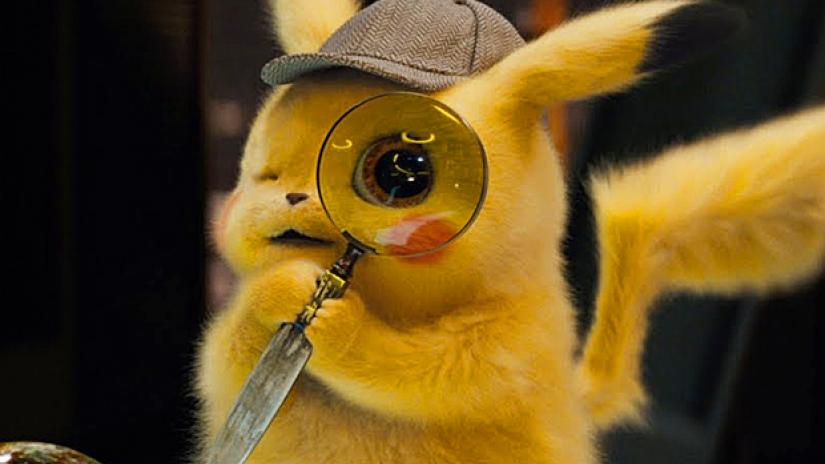
By M.V. Moorhead
Almost 20 years ago it fell to me to review, for another publication, one of the animated Pokemon movies. It was an alienating experience, sitting there, watching the incomprehensible action on the screen, all the while aware that it was perfectly comprehensible to the kids around me in the theatre.
Now I’ve seen the franchise’s first live-action feature film, Pokemon: Detective Pikachu, and I’m only slightly less perplexed.
For the uninitiated, a Pokemon— the term derives from “Pocket Monster”—is any of a large assortment of strange creatures, variously fuzzy or downy or scaly, featured in Japanese video games and trading cards and toys and TV cartoons and so on.
Some of them fly, some swim, others are quadrupedal, with what look like giant cloves of garlic growing out of their backs.
Certainly the most famous is Pikachu, a furry yellow sort-of-cat with red cheeks and a tail that resembles a bolt of electricity. He’s the star of this new film, a mystery set in an alternate reality in which humans and Pokemon co-exist.
The story starts with Tim (Justice Smith), a human kid, traveling to “Ryme City” after hearing of the death of his estranged police detective father. He soon meets his father’s companion Pikachu, here rendered in CGI and voiced by Ryan Reynolds.
In grand film noir tradition, Pikachu’s an amnesiac. The two of them team up with obligatory plucky young reporter Kathryn Newton to probe a convoluted intrigue involving the escape of a powerful dragon/ kangaroo/dinosaur-like Pokemon called “Mewtwo” from a research facility.
That’s about as coherently as I can summarize the plot. Besides, if you’re a Pokemon buff you don’t need me to summarize it for you, and if you’re not, you need it even less.
All I can say is that it’s an impeccably well-made movie in the modern style, briskly edited and scored, with the CGI seamlessly intermingled with the live-action cast and settings. The nattering of Reynolds is amusing at times, the human leads are likable, and such veteran character actors as Bill Nighy and Ken Watanabe turn up in supporting parts. And any movie that gets Bill Nighy a paycheck can’t be all bad.
Speaking of film noir: The weekend of May 9-12 marked the 20th annual Arthur Lyons Film Noir Festival just west of us in Palm Springs, Calif. Not for the first time, the festival’s schedule included some films that require a pretty broad definition of “noir,” like the movie adaptation of Arthur Miller’s All My Sons or the Elvis vehicle King Creole. But they’re interesting flicks, and “noir” is a flexible genre.
Along with 1946’s Somewhere in the Night, which, like Pokemon: Detective Pikachu, features a hero with amnesia, the weekend offered rare showings of a couple of obscure gems, both in beautiful new 35-millimeter prints (hopefully they’ll both show up soon on TCM).
1956’s The Scarlet Hour starred sultry Carol Ohmart, cheating on her abusive husband James Gregory with sap Tom Tryon; it also featured early scene-stealing by the young Elaine Stritch.
Richard Fleischer’s Trapped (1949) starred just-as-sultry Barbara Payton, in the clinch with Lloyd Bridges as an escaped counterfeiter.
Bridges is a brute here, but fabulously dapper; when we first see him he’s brought into the warden’s office at the federal penitentiary, but he looks like he’s dressed for lunch at the Brown Derby.
He keeps getting into fights throughout the film, and I wanted him to knock it off, because I hated to see his outfits get messed up.

